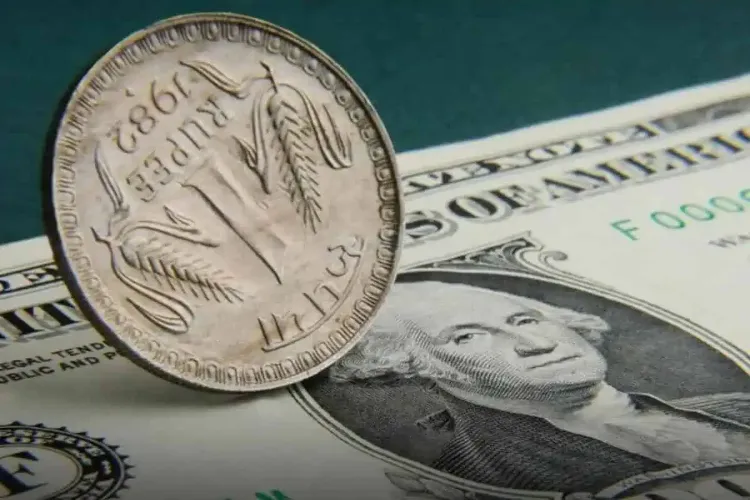July 22nd Current Affairs

Operation Sindoor
July 21st Current Affairs Home / Operation Sindoor Why in News? Parliament’s Monsoon Session, starting July 21, 2025, is expected to feature

Alaska Earthquakes
July 21st Current Affairs Home / Alaska Earthquakes Why in News? On July 21, 2025, Alaska Peninsula was struck by

August 2, 2027 Solar Eclipse
July 21st Current Affairs Home / August 2, 2027 Solar Eclipse Why in News? A total solar eclipse is set

India’s milestone in clean energy transition
July 21st Current Affairs Home / India’s milestone in clean energy transition Why in News? India achieved a milestone by

‘Baby Grok’, child-friendly AI app
July 21st Current Affairs Home / ‘Baby Grok’, Child-friendly AI app Why in News? Elon Musk’s AI company xAI has announced

Impeachment proceedings against Justice Yashwant Verma
July 22nd Current Affairs Home / Impeachment proceedings against Justice Yashwant Verma Context On July 22, 2025, impeachment proceedings against
India Becomes Top Importer of Malaysian Oil Palm Seeds

Context
On July 21, 2025, the Indian Rupee depreciated by 14 paise to close at ₹86.30 per U.S. Dollar, marking continued weakness amidst growing dollar demand from importers and trade-related uncertainties. The fall comes amid volatility in global oil prices, cautious investor sentiment, and pressure from impending U.S. tariff decisions.
Reasons Behind Rupee Depreciation
- Strong Dollar Demand by Oil Importers: India’s heavy dependence on crude oil imports increases dollar demand during price spikes, pressuring the rupee.
- Uncertainty Over India-U.S. Trade Talks: Ongoing negotiations ahead of the August 1 tariff deadline have led to investor caution. A failure to reach a deal could strain India’s export prospects.
- Strengthening of U.S. Dollar Globally: Despite a minor dip in the Dollar Index (down 0.22% to 98.26), broader trends indicate dollar strength due to robust U.S. economic indicators.
- Capital Outflows by Foreign Investors: Although FIIs net bought ₹374.74 crore in equities on July 18, the rupee remains Asia’s weakest due to periodic outflows and profit booking.
- Technical Factors in Forex Market: Breach of the psychological ₹86/$ level has triggered bearish sentiment and algorithmic selling.
Significance of the Event
- Wider Current Account Deficit (CAD): A weaker rupee makes imports costlier, widening the CAD.
- Imported Inflation Risk: Costs of oil, electronics, and food imports rise, affecting retail inflation.
- Impact on Corporate Profits: Exporters benefit, but import-heavy sectors like aviation and pharma suffer.
- Investor Confidence: Persistent depreciation may erode foreign investor confidence in India’s macroeconomic stability.
Definition of Technical Terms
- Rupee Depreciation: A fall in the rupee’s value against the U.S. dollar, making foreign goods and services more expensive.
- Dollar Index: A measure of the U.S. dollar’s strength relative to six major currencies.
- Foreign Institutional Investors (FIIs): Investors or investment funds registered in a country outside the one in which they are investing.
Impacts
On Indian Economy:
- Costlier Imports: Crude oil, machinery, and electronics become expensive.
- Higher Inflation: Import-led inflation pressures food and fuel prices.
- Pressure on RBI: May be forced to intervene or recalibrate interest rates.
On Financial Markets:
- Stock Market Volatility: Rupee weakness can prompt capital outflows.
- Forex Reserves Utilization: RBI may deploy reserves to stabilize the rupee.
Measures to Arrest Rupee Slide
- RBI Intervention: Sell dollars from forex reserves to absorb excess demand.
- Trade Policy Balance: Speed up exports and reduce non-essential imports.
- Attract More FDI: Improve ease of doing business to sustain capital inflows.
- Currency Hedging: Encourage businesses to hedge forex risk.
Challenges
- Global Oil Volatility: Any Middle East crisis or Houthi attacks escalate crude prices.
- U.S. Tariff Threats: Trade tensions with the U.S. add external pressure.
- Geopolitical Risks: War in Gaza and tensions in the Red Sea region influence markets.
Way Forward
- Strengthen Bilateral Trade Agreements to mitigate tariff-related shocks.
- Diversify Import Sources and promote domestic oilseed and energy production.
- Improve Export Competitiveness through PLI schemes and infrastructure.
- Enhance Forex Reserve Buffer to deal with future currency volatility.
- Monetary-Fiscal Coordination for inflation control and rupee stability.
Prelims MCQ
Q. Consider the following statements:
- India’s crude oil import demand influences the rupee’s exchange rate against the U.S. dollar.
- A fall in the rupee’s value makes exports cheaper but increases the cost of imports.
Which of the above is/are correct?
- 1 only
- 2 only
- Both 1 and 2
- Neither 1 nor 2
Correct Answer: C. Both 1 and 2
Explanation:
- Statement 1: Correct
- India is heavily dependent on crude oil imports (over 80% of its requirement).
- Higher crude oil import bills increase demand for U.S. dollars, thereby weakening the rupee.
- This demand–supply dynamic directly influences the rupee-dollar exchange rate.
- Statement 2: Correct
- When the rupee depreciates, Indian exports become cheaper for foreign buyers, potentially boosting export competitiveness.
- However, it also raises the cost of imports, especially for essential goods like crude oil, electronics, and machinery, leading to inflation.
Mains Question
Q. “Discuss the major causes and consequences of the Indian rupee’s depreciation in recent years. Suggest short-term and long-term measures to ensure currency stability.” (250 words)




